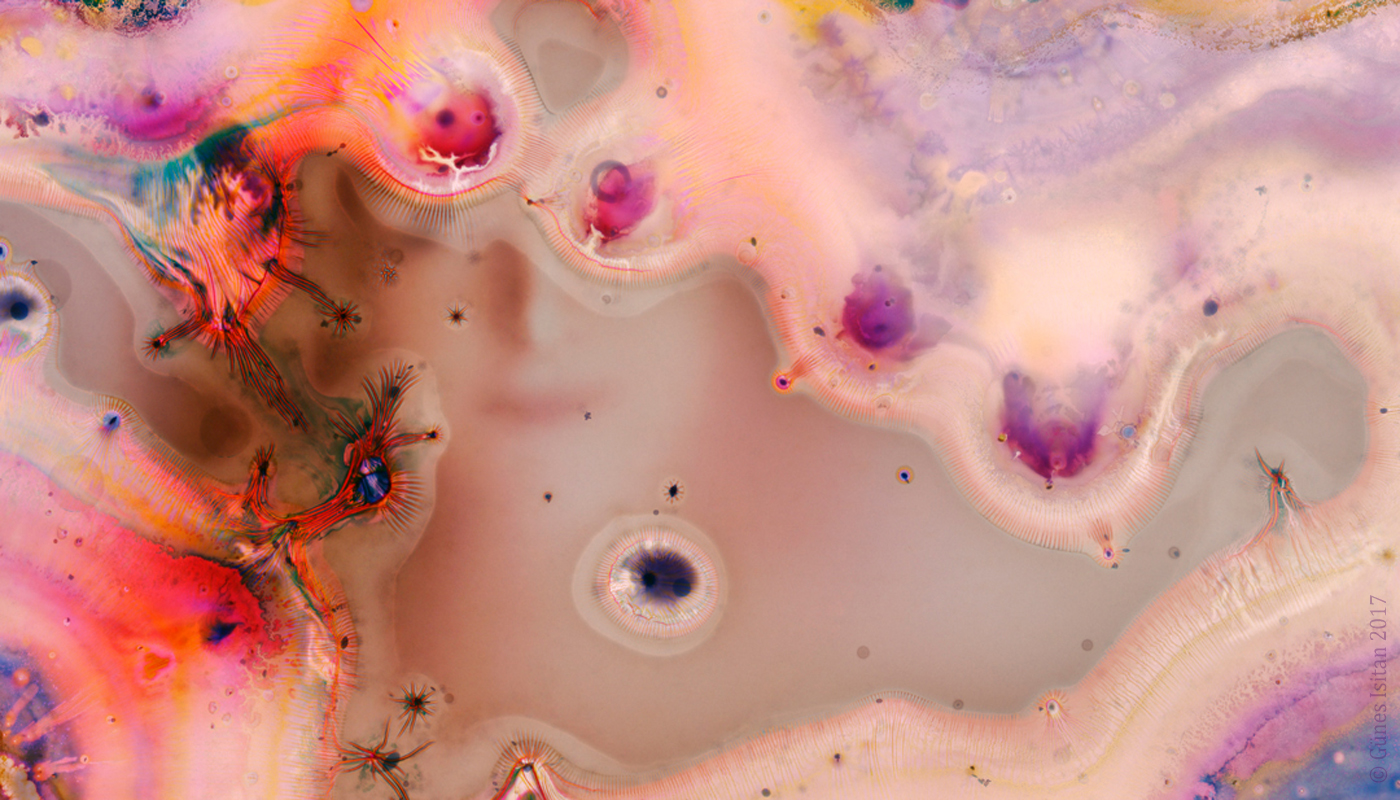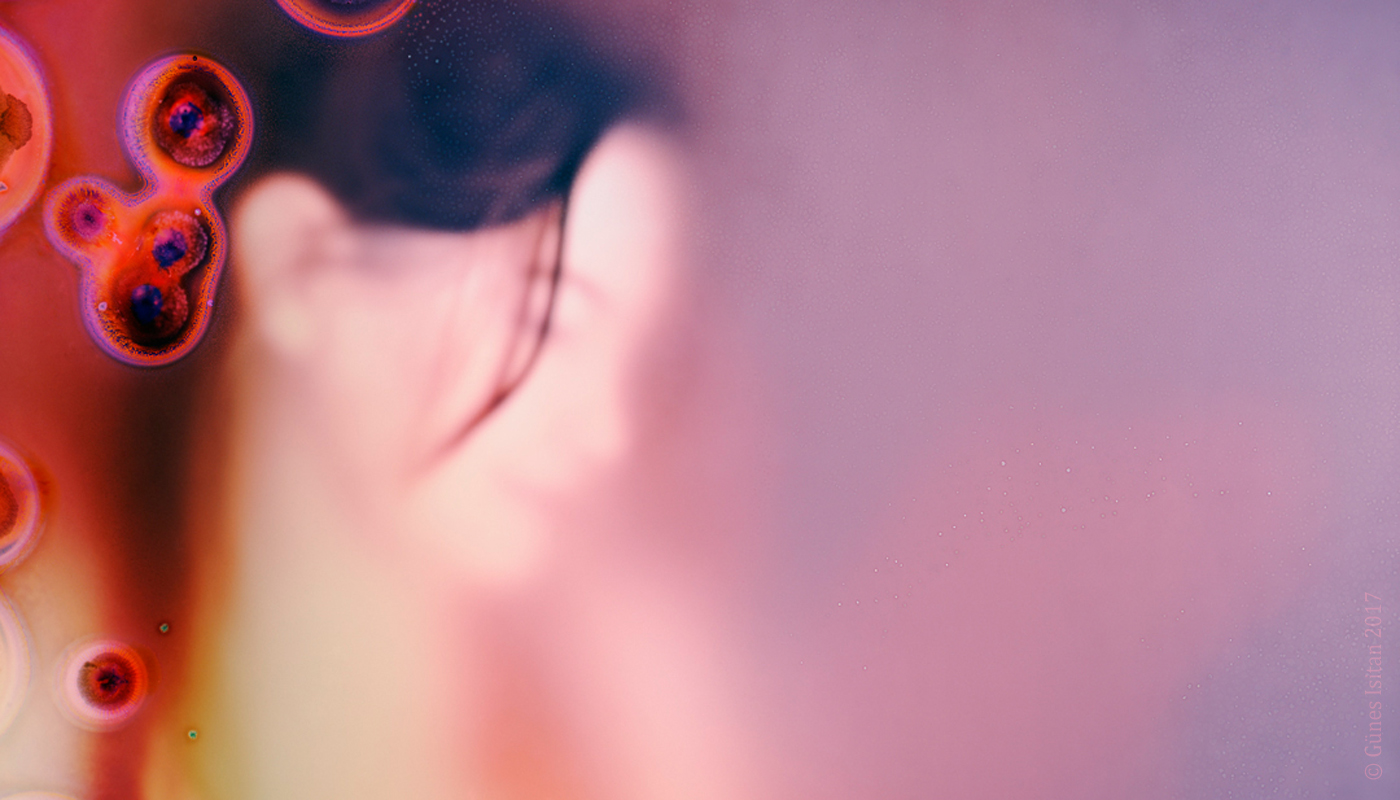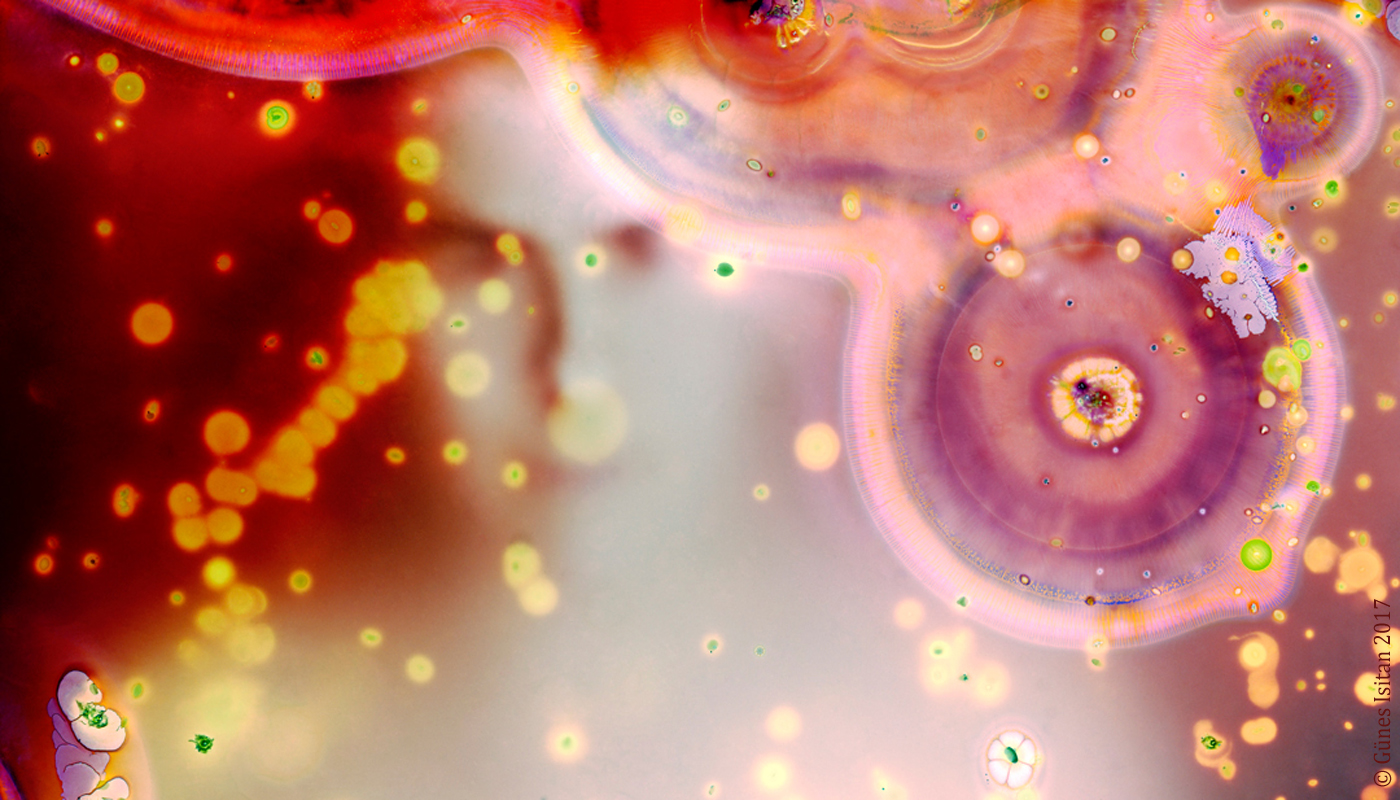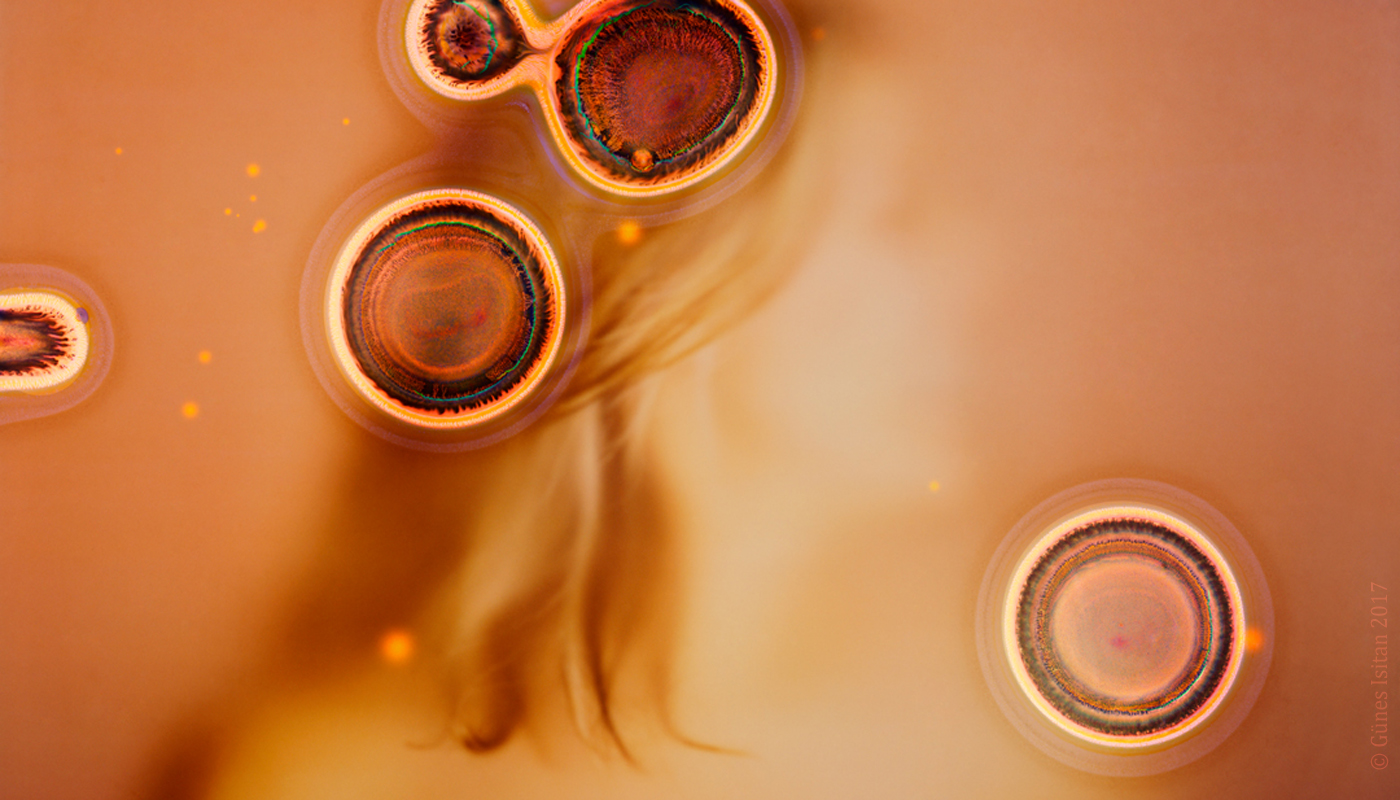We tend to think in terms of “us versus them” when it comes to microorganisms. What do we do when that seasonal cold is going around? When we hear about some new bacterial strain causing trouble? Clean, disinfect, eradicate. We take up arms against the invader.
But the reality is not so Sigourney Weaver and “Alien.” In fact, we’re home to a significant number of microorganisms such as bacteria and fungi at any given time — some coexist peacefully with us while others even benefit us (and us them). These small companions are collectively referred to as the human microbiota, and it’s thought that we each contain roughly as many microbes as we do our own cells.
Artist Günes-Hélène Isitan explores this unseen world and its connection to humanity in her work, including “Hybridities: Almost Other,” which is being shown at the Visual Voice Gallery in Montreal from October 28 through December 9.
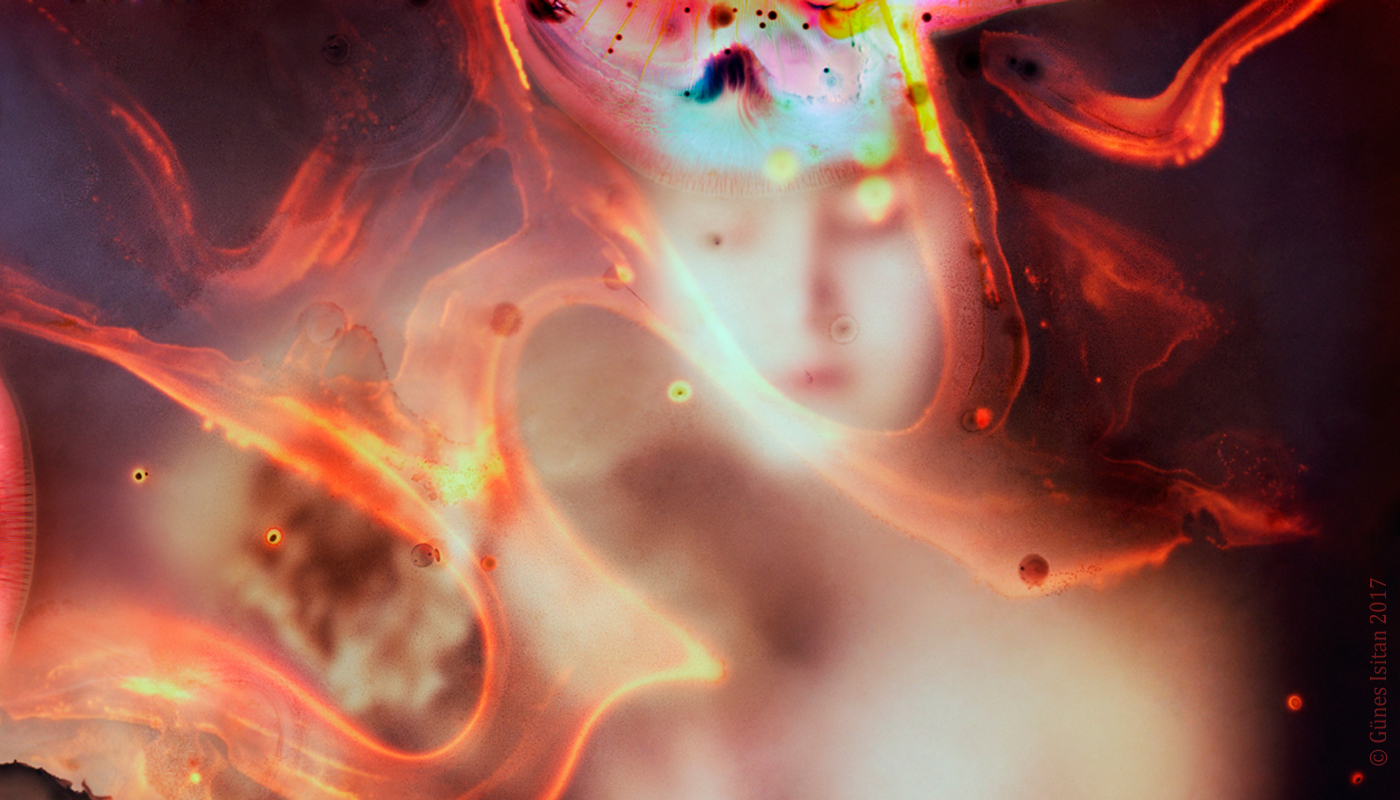
“Annabelle-Microorganisms/Maya-Microorganisms Hybrids.” Slide, microorganisms, glass Petri, agar, resin. All images courtesy and copyright of Günes-Hélène Isitan.
While humans might see themselves as being separate from or above nature, who we are also depends on nonhuman organisms like these microbes — the boundaries are not necessarily distinct, Isitan explains in a statement on her site. These microbes are, in a sense, part of us, they have evolved with us, and they may even influence our mental health and mood.
“By postulating a human/microbe superorganism, I present a humanity whose embodiment is a multispecies creation, and whose skin isn’t a limit, a border, but an ever-changing permeable zone,” she wrote.
To create the “multispecies self-portraits” in the exhibit, Isitan combined traditional portraits with the effects of microorganisms obtained from the subjects’ faces. She developed a method that transforms the photographic film into a medium for the microbes; the organisms then modify the portraits by altering the ink in unexpected ways.

“Sarah-Microorganisms/Élia-Microorganisms Hybrids.” Slide, microorganisms, glass Petri, agar, resin.
In the final result, the portraits become less identifiable as one gets closer to the image, Isitan noted, in a sense blurring the traditional boundaries of humanity.
The works evoke the idea that “to be human no longer means to be a free, independent agent; indeed, a hybrid mode of being implies that human and nonhuman existences are constitutively engendered,” she wrote. “The nonhuman is not located ‘out there,’ in the distance; through co-evolution, it is the reason for the existence of each and every one of us.”
Prior projects such as “MicroScapes” and “HumanScapes” have also followed this theme and used both photography and microorganisms. Isitan told Sparked that she initially studied photography and was intrigued by its creative component but also the chemical process of working with film. This eventually led her to explore different ways of prematurely aging or modifying film negatives, experimenting with things like acids, food, and humidity.
“Fruits gave me my first interesting results, but I had no idea why,” she said via email. “I started reading, extrapolating, experimenting, and finally understood I was dealing with microorganisms. I was hooked.”
She plans to continue these themes in her next project, “Spill Your Guts,” which will take the hybrid view of humanity a step further, exploring “the ‘human’ as a network of different species,” she said.
In addition to her solo exhibit at the Visual Voice Gallery in Montreal, Isitan’s images will be shown at the Voix Visuelle Artist Center in Ottawa from April 7 through May 8, 2018. More information about her and her work is available at gunesisitan.com.
